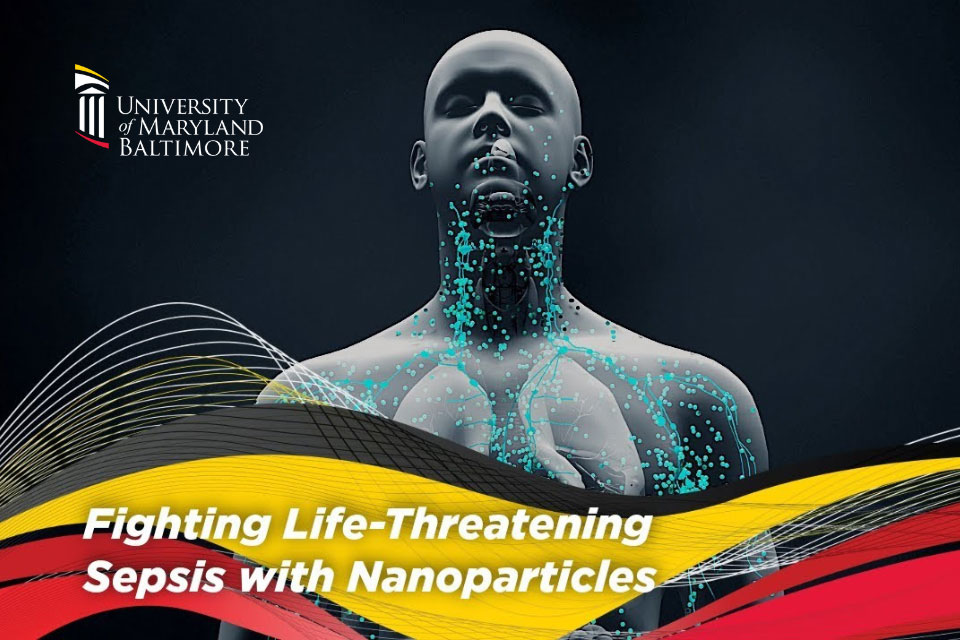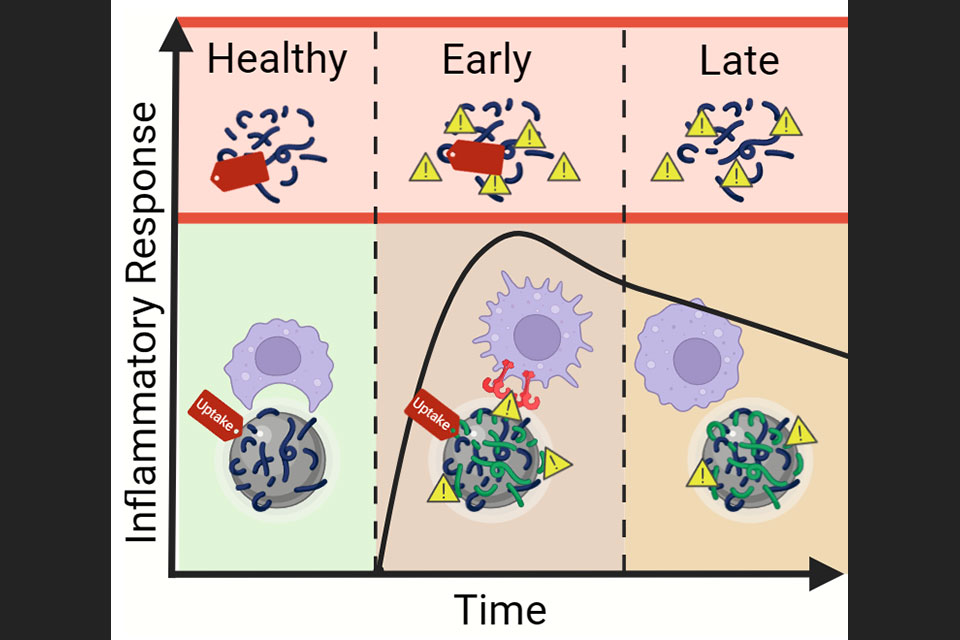Breakthroughs Can’t Wait: Fighting Life-Threatening Sepsis with Nanoparticles
Ryan Pearson, PhD, of the University of Maryland School of Pharmacy is moving forward with a unique approach to defeating sepsis using nanoparticles.

By UMB Communications and Public Affairs, as published in the Elm
November 6, 2025
Sometimes the body responds to infection with an overreaction, casting a storm of life-threatening inflammation called sepsis.
Sepsis can lead to tissue damage and organ failure and is the leading cause of death in hospitals in the United States. But sepsis is also very complicated and presents with different symptoms in different patients. When diagnosed with sepsis, patients are often treated with antibiotics to fight the underlying infection, while at the same time receiving fluids to stabilize organs and oxygen to improve breathing. Still, finding more effective tools to fight sepsis has proven very difficult.
Ryan Pearson, PhD, associate professor of pharmaceutical sciences and director of the Bio- and Nano-Technology Center at the University of Maryland School of Pharmacy, has been awarded a $3.4 million grant from the National Institutes of Health to move forward with a unique approach to defeating sepsis using nanoparticles. His approach is different because the custom-designed nanoparticles are not used to transport other drugs, but are themselves the treatment.
Watch the video below as Pearson talks about his work.
These drug-free nanoparticles are composed of biocompatible lactic and polylactic acid, which serve to change different aspects of a person’s immune response. In early tests, they’ve been shown to reduce proinflammatory responses without damaging key immune cells. They also work well with other antibiotics to improve the immune system’s ability to neutralize harmful bacteria causing infection.
Pearson’s interdisciplinary team includes co-principal investigator Lin Zou, MD, PhD, associate professor at the University of Maryland School of Medicine (UMSOM), and co-investigator Wei Chao, MD, PhD, FAHA, Anesthesiology Endowed Professor of Translational Research at UMSOM.



